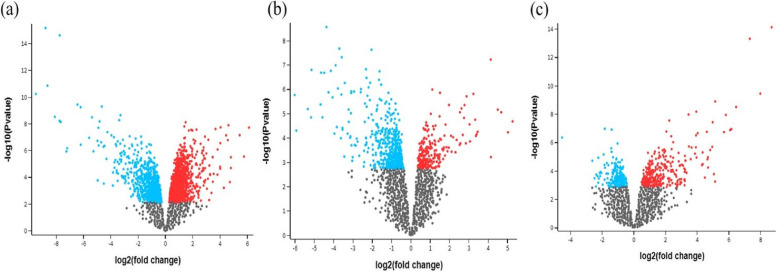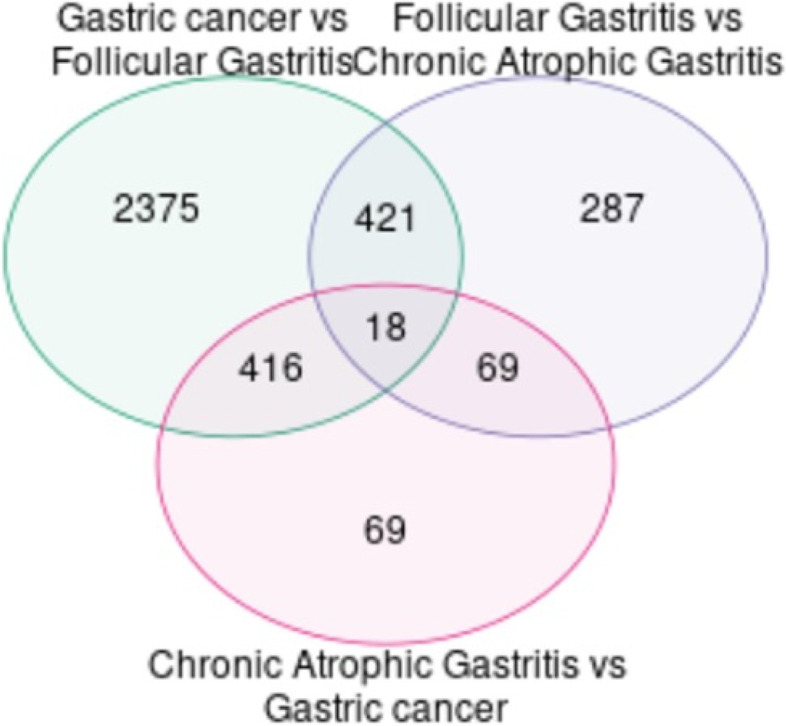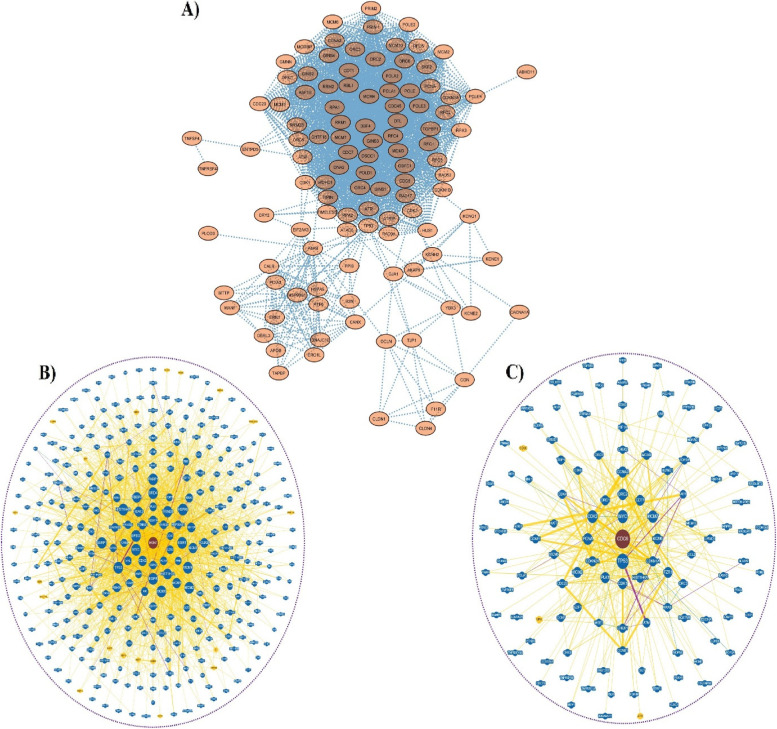胃癌的早期诊断和预后生物标志物:从慢性萎缩性胃炎到胃癌的胃粘膜随后改变的系统水平分子基础
IF 3.5
Q3 Biochemistry, Genetics and Molecular Biology
Journal of Genetic Engineering and Biotechnology
Pub Date : 2023-12-01
DOI:10.1186/s43141-023-00539-0
引用次数: 0
摘要
目的:了解胃癌早期发生的分子机制变化具有重要意义。我们采用综合生物信息学方法定位各种生物信号通路和分子指纹图谱,以了解GC的病理生理。为了便于发现其可能的生物标志物,可以进行快速诊断,从而改进诊断并改善患者的预后。方法:通过蛋白-蛋白相互作用网络、功能差异表达基因(DEGs)和途径富集研究,检测慢性萎缩性胃炎和GC个体的基因表达谱。结果:从慢性萎缩性胃炎和GC活检的微阵列数据集中共鉴定出17个DEGs,其中包括8个上调基因和9个下调基因。根据KEGG分析,这些deg主要富集于CDK调控DNA复制和有丝分裂M-M/G1期途径(p > 0.05)。我们在17个基因的蛋白相互作用网络中发现了两个中心基因,MCM7和CDC6(随着最大相互作用的增加,扩展到110个节点和2103个边)。在使用GEPIA和Human Protein Atlas数据库确认后,发现MCM7在GC组织中上调。结论:综合研究显示,MCM7在慢性萎缩性胃炎和胃癌中表达升高,提示该蛋白可能作为早期检测胃癌的一种有前景的生物标志物。本文章由计算机程序翻译,如有差异,请以英文原文为准。



Early diagnostic and prognostic biomarkers for gastric cancer: systems-level molecular basis of subsequent alterations in gastric mucosa from chronic atrophic gastritis to gastric cancer
Purpose
It is important to comprehend how the molecular mechanisms shift when gastric cancer in its early stages (GC). We employed integrative bioinformatics approaches to locate various biological signalling pathways and molecular fingerprints to comprehend the pathophysiology of the GC. To facilitate the discovery of their possible biomarkers, a rapid diagnostic may be made, which leads to an improved diagnosis and improves the patient’s prognosis.
Methods
Through protein–protein interaction networks, functional differentially expressed genes (DEGs), and pathway enrichment studies, we examined the gene expression profiles of individuals with chronic atrophic gastritis and GC.
Results
A total of 17 DEGs comprising 8 upregulated and 9 down-regulated genes were identified from the microarray dataset from biopsies with chronic atrophic gastritis and GC. These DEGs were primarily enriched for CDK regulation of DNA replication and mitotic M-M/G1 phase pathways, according to KEGG analysis (p > 0.05). We discovered two hub genes, MCM7 and CDC6, in the protein–protein interaction network we obtained for the 17 DEGs (expanded with increased maximum interaction with 110 nodes and 2103 edges). MCM7 was discovered to be up-regulated in GC tissues following confirmation using the GEPIA and Human Protein Atlas databases.
Conclusion
The elevated expression of MCM7 in both chronic atrophic gastritis and GC, as shown by our comprehensive investigation, suggests that this protein may serve as a promising biomarker for the early detection of GC.
求助全文
通过发布文献求助,成功后即可免费获取论文全文。
去求助
来源期刊

Journal of Genetic Engineering and Biotechnology
Biochemistry, Genetics and Molecular Biology-Biotechnology
CiteScore
5.70
自引率
5.70%
发文量
159
审稿时长
16 weeks
期刊介绍:
Journal of genetic engineering and biotechnology is devoted to rapid publication of full-length research papers that leads to significant contribution in advancing knowledge in genetic engineering and biotechnology and provide novel perspectives in this research area. JGEB includes all major themes related to genetic engineering and recombinant DNA. The area of interest of JGEB includes but not restricted to: •Plant genetics •Animal genetics •Bacterial enzymes •Agricultural Biotechnology, •Biochemistry, •Biophysics, •Bioinformatics, •Environmental Biotechnology, •Industrial Biotechnology, •Microbial biotechnology, •Medical Biotechnology, •Bioenergy, Biosafety, •Biosecurity, •Bioethics, •GMOS, •Genomic, •Proteomic JGEB accepts
 求助内容:
求助内容: 应助结果提醒方式:
应助结果提醒方式:


